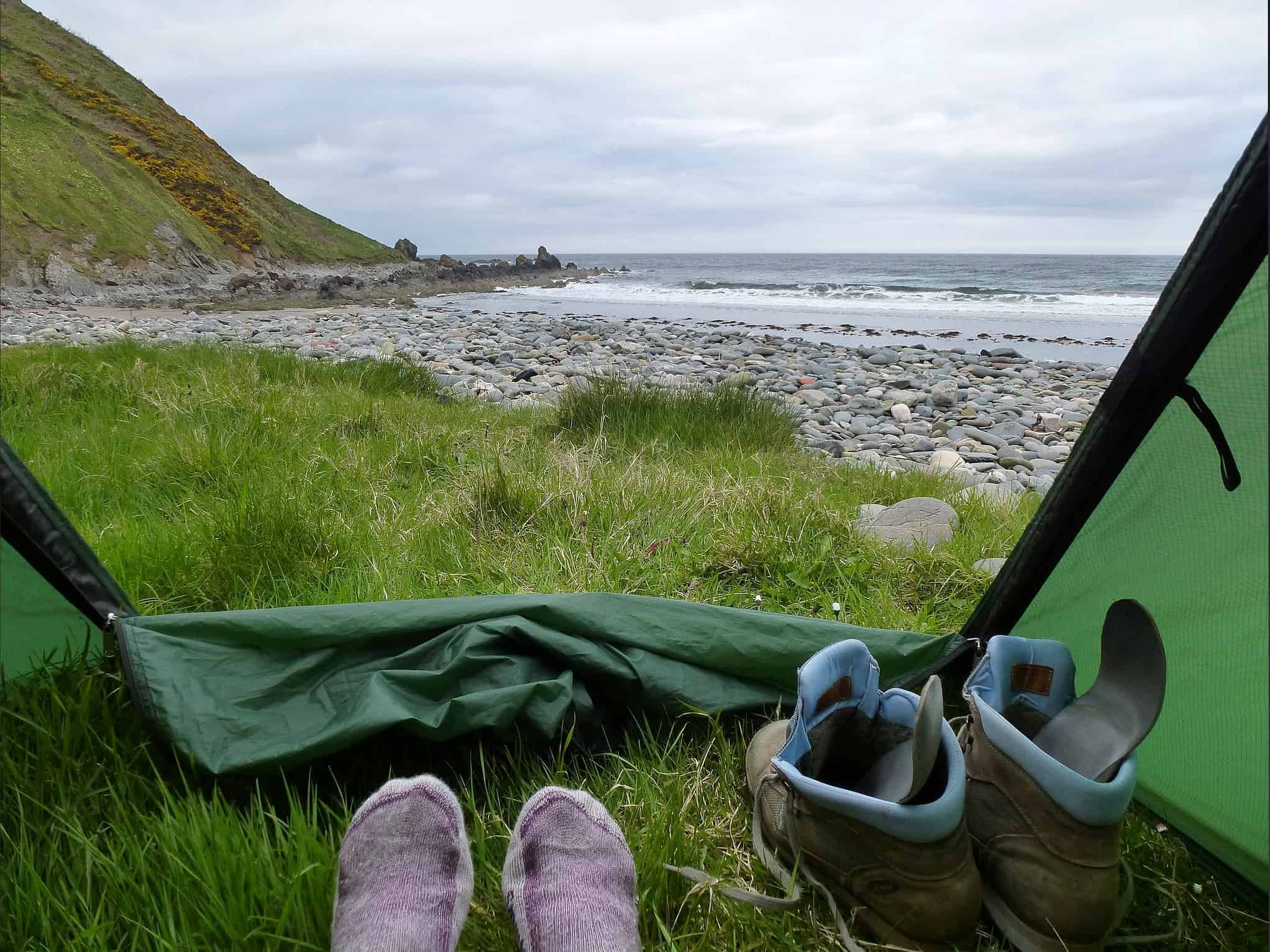Last updated on February 9th, 2023 at 04:21 pm
Tents are definitely an investment. Not only do they make or break your camping experience, they’re probably the most costly of your gear. To add to this, many modern tents are also made of ultra lightweight , and fragile materials. This may have you wondering how to protect your new tent investment. You may even be wondering, “Do I need to use a tent footprint?”
Here we’ll discuss the benefits and drawbacks of using a tent footprint, and whether one is right for you. We’ll also show you how to make your own!
What Is a Tent Footprint
While there are many technical parts of a tent, footprints are quite simple. A tent footprint is nothing complicated.
A footprint is simply a piece of fabric that lays between the ground and the floor of your tent.
Additionally, they’re typically cut a couple inches smaller than the bottom of your tent surface to prevent rain from collecting directly beneath the tent floor.
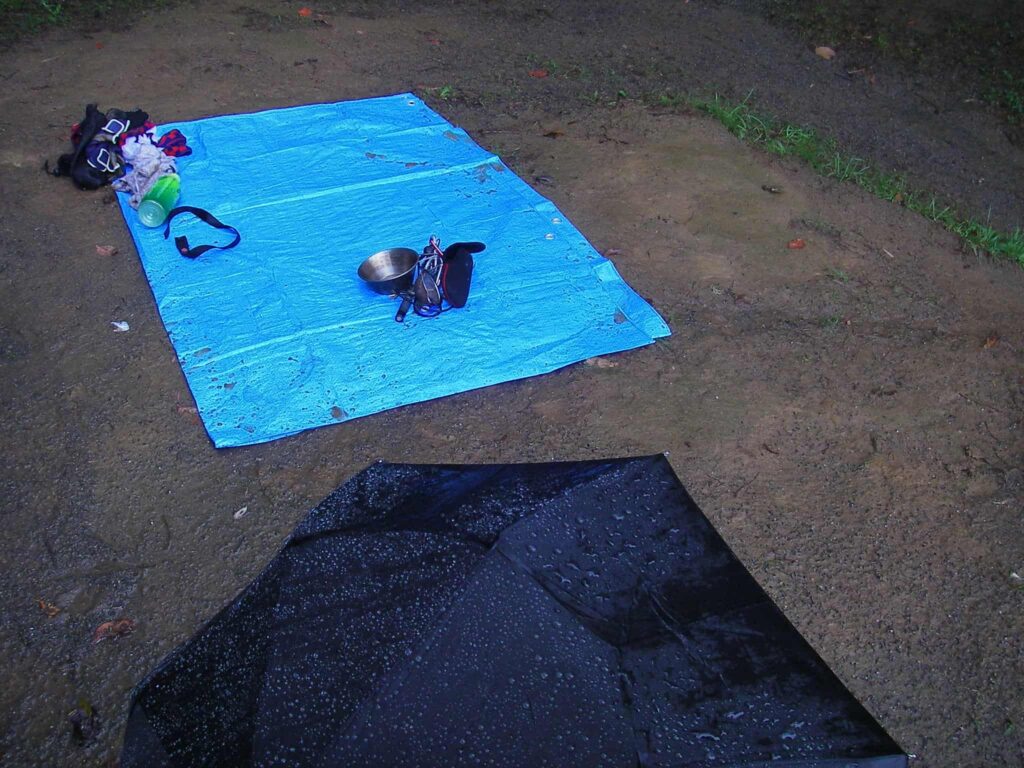
What Are Tent Footprints Made of
Firstly, tent manufacturers will list the “denier” of the material. A denier is simply a measure of thread thickness. The thicker the thread, the higher the denier.
Tent specific footprints are usually made of the same materials as your tent, like polyester or nylon, but in a tighter weave.
Ideally, you want a higher denier, because this means the tent footprint is more durable. In addition, tent footprints are usually treated to be waterproof (which is noted by x-milimeters).
Other popular materials for DIYers include:
Polyethylene Tarps (Poly Tarp)
Poly tarps are the classic tarps you’ll see to cover things sitting outdoors. These tarps are water resistant, easily available, and very affordable, which is why they are so common.
However, from experience, they’re a bit heavier than manufacturer specific footprints. Plus, you have to fold it in strange ways to get it down to 1-2 inches less than your tent floor.
Window Wrap (Polycryo)
Window wrap is often used by backpackers for its light weight. And, while it’s also waterproof… it isn’t very durable.
Typically, you can expect to get a season out of it. However, this can be great if you’re just looking for a temporary footprint!
Unfortunately, this option is not great for the environment, with its high turnover of thin plastic sheeting.
PU Coated Nylon or Polyester fabric
PU (polyurethane) coated nylon or polyester fabrics are very popular fabrics for tent footprints. This option is a lightweight yet durable and lasting fabric.
This option is available from fabric retailers and cut to the desired size.
HomeWrap
Tyvek or HomeGuard products are available at the hardware store. Because it protects new construction from rain, it is great for camp.
This product is made of polyethylene fibers, making it a durable, lightweight, and affordable option for campers.
However, it is only commercially sold in 3′, 5′, and 9′ widths. So, you may need several overlapping pieces if your tent is enormous.
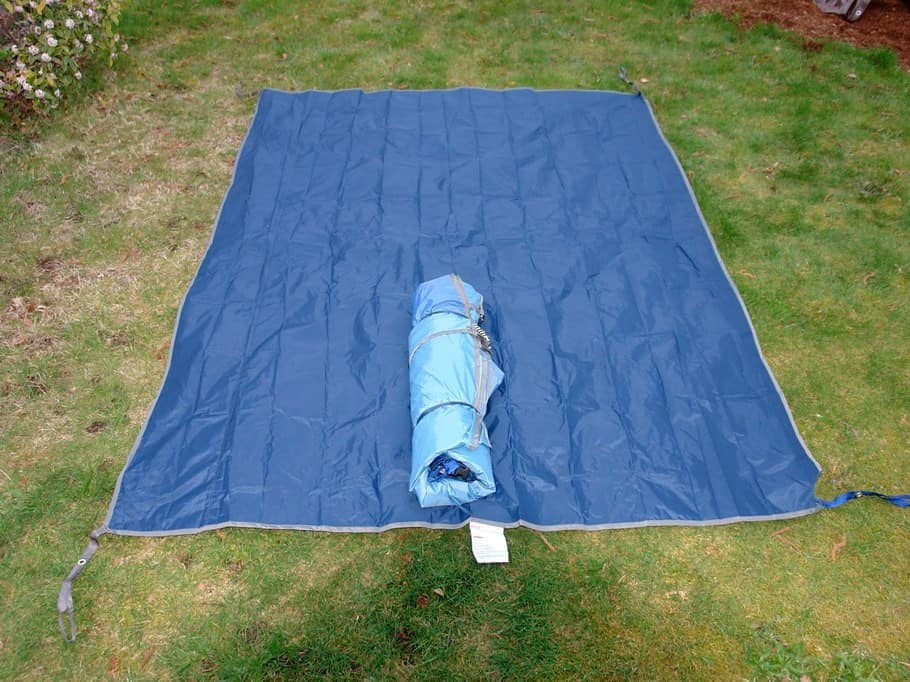
What Is a Footprint Used for Under a Tent
When deciding where you are on the Do I need to use a tent footprint question, you must consider why you may want one.
In short, tent footprints are used to protect your tent. We use tent footprints for the same reason we lay a blanket down on the ground before having a picnic.
The blanket protects against scratches by sticks and stones. A tent footprint is the same concept in action, just for the bottom of your tent.
When you aren’t worried about your tent, you can focus on relaxing and hanging out. For those moments, we’ve found the Best Camping Stove and Best Camping Teapot for Backpackers.
Why You Should Use a Footprint
Tent foot prints serve several important functions. Namely, protecting your tent investment. Here are several key benefits:
1. Footprints protect your tent floor
As you’ve likely noticed, the ground can be pretty harsh. Depending on your geography, it can be cold, hot, filled with sharp rocks or stones, briar thorns and more.
All of these elements can cause wear and tear on the floor of your tent. Especially rocks and sharp sticks, which can graze and poke against your tent, leading to tears.
When your tent is brand new, each small hole may not seem like a big deal. However, over time, this wears down your tent faster, and eventually results in big tears.
Tent footprints provide a layer of durable protection between your tent floor and the ground. Because at the end of the day, it is much more affordable to replace your tent footprint than it is to replace your tent floor!
2. Footprints keep your tent clean
You may have also noticed that the ground is… dirty. Aside from that, sap, mud, berry juice, bugs, and soon can soil and stain your tent.
A tent footprint protects your tent floor and gear from these stains. This will make your tent more enjoyable to walk in, and will also keep you from having to clean it as often.
3. Footprints prolong the life of your tent
Furthermore, a tent footprint will help you get many many seasons out of your tent.
Because you will experience less tears and punctures in your tent floor, a footprint greatly prolongs the life of your tent.
Especially if you use it to plan your camp. Dragging an erect tent into place can get it snagged by low tree limbs or prickers.
And, punctures or small tears on the tent canopy can quickly render your tent useless during rainstorms on subsequent adventures.
When it comes to the question ‘Do I need to use a tent footprint’ we find that protecting our tent is the best reason to use one.
4. Footprints add warmth to your tent
Not only does a footprint keep your floor dry and safe, it adds a layer of insulation between your bed and the cold ground.
Campers find that this is especially helpful when campong on concrete or hardpan soil. Additionally, adding a sleeping pad to your sleeping bag, you can gain further warmth. And we’ve found the best in our Best Sleeping Pad for Side Sleepers post.
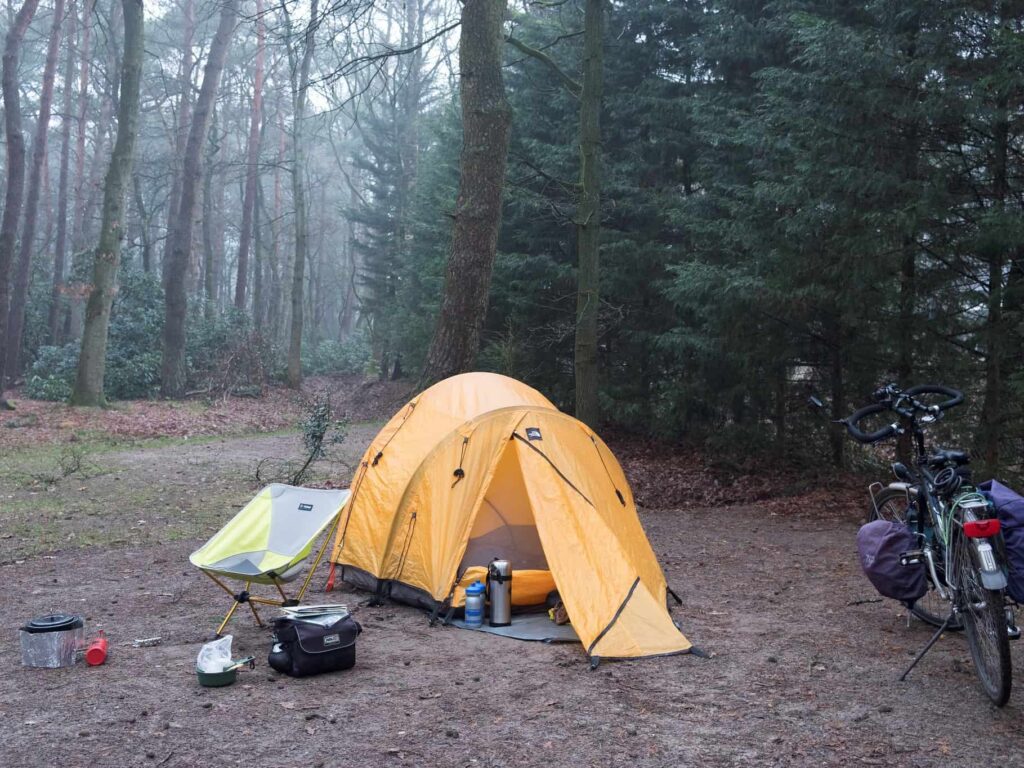
5. Footprints help your tent dry faster
Finally, your tent will be quite saturated after a rain storm or morning dew. And, campers should always allow their gear to thoroughly dry before packing up.
Not only to avoid mold, mildew and bacteria to grow, but also to discourage your tent material from over stretching and tearing.
When you use a footprint, the most vulnerable, and potentially saturated, part of your tent (its base) remains dry.
Because your base is dry, you’ll have a fully dry tent in no time for quicker, more efficient pack up.
6. Adds a floor if your tent needs one
As you can see from the picture above, some tents come without a floor.
It’s uncommon, but if you have this style tent, you may really enjoy a barrier between you and the ground.
And all the ants, grass irritation, gnats, creatures, and sand that comes with it.
7. Tent footprints help you plan your campsite
Believe it or not, tent footprints can also save you time!
Because it is the first thing you lay down at a potential site, you can see if the site works before pitching your tent.
This helps you visualize if the ground is ideal or if any branches will impede on your set up.
Additionally, it helps avoid moving your whole setup if you see a stray root or low spot.
8. Tent footprints can serve other purposes
Additionally, tent footprints have other uses at camp.
They can be a dry place to sit beneath or stash gear in a pinch in a rainy camps.
Also, they can double as a poncho, both for yourself and your gear as you hike. Which helps keep your tent humidity down by preventing saturated gear and clothes.
Reasons to Not Use a Footprint
For all of the benefits tent footprints offer, there are also some reasons not to use one. When the question, ‘Do I need to use a tent footprint,’ arrives, campers have a real choice to leave it at home.
Whether you’re backpacking or car camping, a footprint may not fit into your plans. Or maybe you just need a reason not to rush out and buy one.
Here are a few reasons why you may not want a footprint:
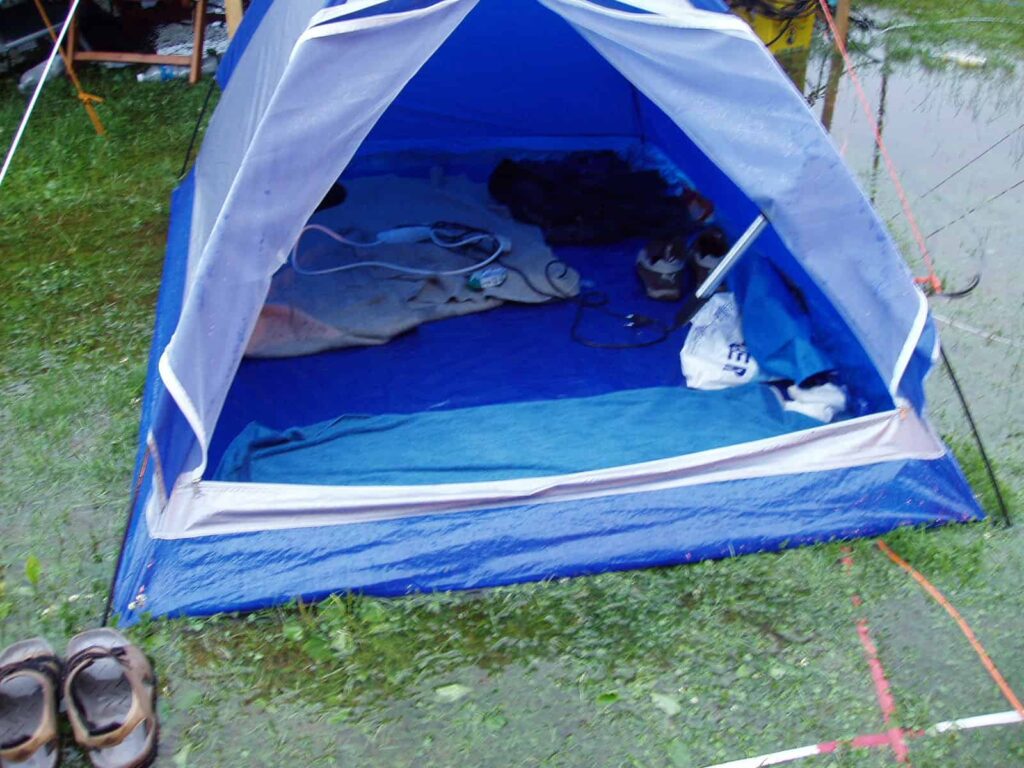
1. The extra weight
If you’re looking to keep your backpack ultralight, a tent footprint may add some extra, unwanted weight. The amount of weight depends on the material your footprint is made out of.
- Polycro footprints can weigh in at 28-56 grams per 2 person tent
- Tyvek footprints can weigh in at 55-140 grams per 2 person tent
- Custom footprints can range anywhere from 170-225 grams per 2 person tent
Obviously, not carrying a tent footprint can save you a few ounces of weight.
2. Cost
After you’ve spent hundreds of dollars on a tent, it can be difficult to imagine spending more.
Footprints aren’t always included with tents. And, a compatible one can run you between $30-$150.
This cost also depends on your tent manufacturer. Tent footprints are typically designed for your specific type of tent. The cost of your footprint may be higher or lower depending on your tent type and brand.
3. They’re bulky
If you’re a backpacker or just don’t have a lot of space, carrying a tent footprint may be burdensome.
Footprints can typically take up a couple liters’ worth of space in your pack.
So if you can’t afford to carry a few more liters of water bottles in volume, a footprint may not be for you.
4. Your tent has a high denier floor
Here is some good news, if you purchased a tent with a high denier floor, you may not even need a tent footprint!
Remember that denier measures the durability and thickness of the fibers in a given material.
If your tent already has a high denier count, it may be overkill to add a tent footprint.
If your tent consists of 30 or higher denier material, it’s worth potentially leaving the footprint at home.
However, you may have shelled out a lot of money for such a high denier tent. In which case, you probably would like to protect your investment.
5. You’re camping on soft ground
If you’re camping on soft ground, like sand, you also may not need a tent footprint. Soft materials like sand and grass are less abrasive to your tent floor.
If you’re camping in the mountains or in a forest, however, a tent footprint is more appropriate.
How to Make Your Own Tent Footprint
If you’re hesitating to spending more money on a tent footprint after purchasing a tent, don’t worry, you can make your own!
In some cases your tent’s compatible footprint can actually be quite expensive, say $150.
In other cases it may make more economical sense to buy the compatible footprint, as many DIY materials will cost around $40-$50.
However, if you happen to have any of these already on hand, or your footprint is out of stock or discontinued, a DIY solution may be worth it.
For instance, we have a hundred foot roll of Tyvek laying in our basement, with no purpose.
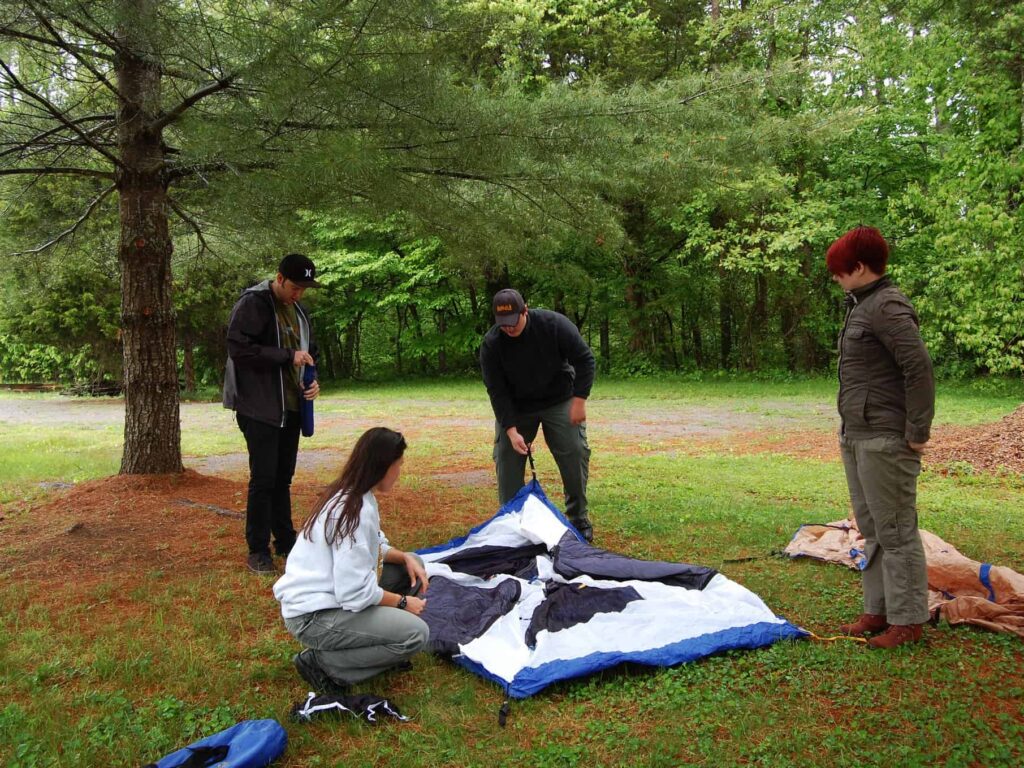
Pitch your tent
In order to get a measurement for your DIY footprint, you’ll need to pitch your tent. Find a flat, grassy area in your yard or park and pitch it.
Indoors is even more ideal to avoid getting your tent dirty, and to get an accurate, level measurement.
Measure the base
Now, you’re going to measure the dimensions of your base.
You want to do this so you don’t spend more money than necessary on material, but also for your final cut of the fabric.
Subtract 1 inch from your measurements
Footprints are usually slightly less than the underside of your tent to keep water from collecting between it and your tent floor.
Next, you’ll want to subtract 1” from your measurements to get the final dimensions for your footprint.
Choose your material
The next important step of making a DIY footprint is to choose your materials. Ideally, you want to choose a flat material with no seams.
Tent footprints can be made out of: painter tarps (which are ungodly heavy), polyethylene tarps, polycro, and Tyvek Homewrap, to name a few.
Popular options include:
- Tyvek for its durability and low cost factor. It is also water resistant and lightweight.
- Classic polyethylene tarps, which are also inexpensive and very easy to find.
- Polycro, which is ultra-affordable and lightweight.
Lay out material and cut to size
Finally, lay out your chosen material flat and mark your measurements (don’t skip this, it helps with cutting!). Then, cut to size.
In addition, if you’re dealing with a larger tent, you may need to sew pieces of fabric together, especially Tyvek.
After you do this, it’s very important that you use seam sealer tape to waterproof the seam.
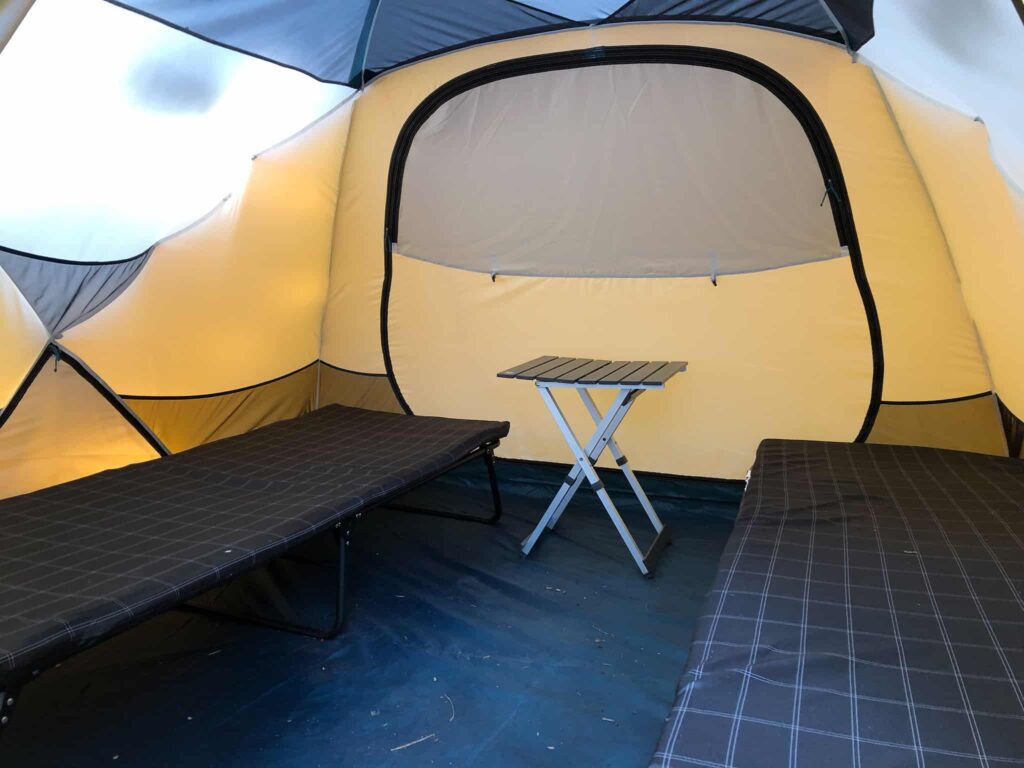
How Big Should a Tent Footprint Be
As mentioned earlier, it’s important that your tent footprint is actually smaller than the base of your tent.
This is because if it is raining or muddy outside, water can catch in the exposed areas and pool under your tent. Dirt can also slip in and dirty water will slowly seep up through your tent floor.
This is why you want to subtract an inch off your measurements when making your tent footprint.
Take Care of Your Tent
Finally, when wondering, ‘do I need to use a tent footprint,’ there are some great arguments for both schools of thought. However, we find them worth it. Tents are an investment, and you’ll want yours to be in good condition for as long as possible. A tent footprint can help you achieve this. Protecting your tent from the harsh ground is the first step. Whether you’re searching for a footprint, or looking to DIY, we hope these tips give you peace of mind in your decision.
Regardless of your choice to bring a footprint or not, your next trip will be an adventure.
About the Author
Sarah Sampsell
Title Image Credit, Do I Need to Use a Tent Footprint: Ted and Jen | (source) | Attribution 2.0 Generic (CC BY 2.0) — reduced file size and image
Image Credit 1, Do I Need to Use a Tent Footprint: yoppy | (source) | Attribution 2.0 Generic (CC BY 2.0) — reduced file size and image
Image Credit 2, Do I Need to Use a Tent Footprint: Josh Larios | (source) | Attribution-ShareAlike 2.0 Generic (CC BY-SA 2.0) — reduced file size and image
Do I Need to Use a Tent Footprint, Image Credit 3: Kitty Terwolbeck | (source) | Attribution 2.0 Generic (CC BY 2.0) — reduced file size and image
Do I Need to Use a Tent Footprint, Image Credit 4: heipei | (source) | Attribution-ShareAlike 2.0 Generic (CC BY-SA 2.0) — reduced file size and image
Image Credit 5, Do I Need to Use a Tent Footprint: Virginia State Parks | (source) | Attribution 2.0 Generic (CC BY 2.0) — reduced file size and image
Image Credit 6, Do I Need to Use a Tent Footprint: bgwashburn | (source) | Attribution 2.0 Generic (CC BY 2.0) — reduced file size and image

